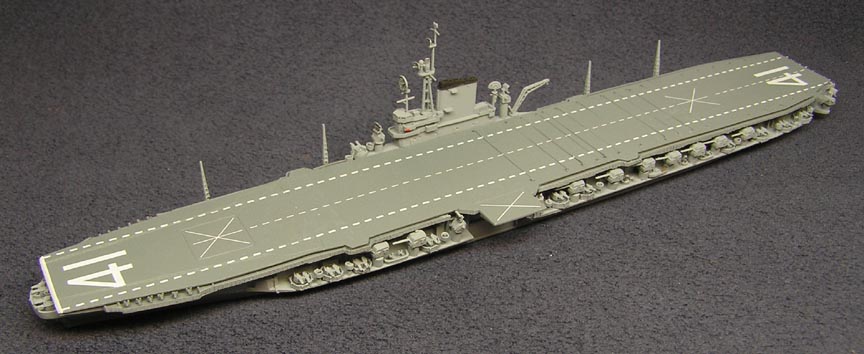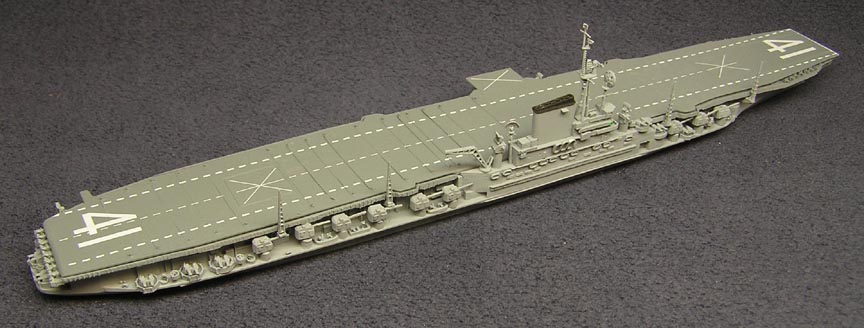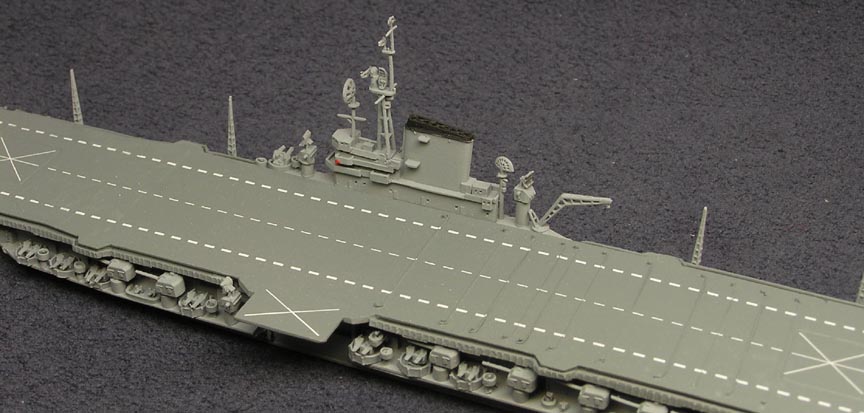U.S.S. Midway
CVB-41


Initially she served mostly in the Atlantic and Medierranean, with her first annual deployment to the 6th Fleet in Oct 1947. Redesignated CVA-41 on 1 Oct 1952. On 28 Jun 1955, the ship sailed for Puget Sound Naval Shipyard, where she underwent an extensive modernization program (SCB-110), receiving an enclosed hurricane bow, an aft deck-edge elevator, an angled flight deck, and steam catapults, similar to her sister Franklin D. Roosevelt ( CVA-42). She returned to service 30 Sep 1957, homeported at Alameda. From 1958 she served in the Pacific with 7th Fleet. Made her first air strikes in the Vietnam War in Apr 1965.
Midway entered the San Francisco Bay Naval Shipyard 11 Feb 1966 for a massive modernization (SCB-101.66). The flight deck was enlarged from 120,000 to 170,000 sq ft, and the angle of the flight deck landing area was increased to 13.5 degrees. Elevators were enlarged, moved, and given almost double the weight capacity. She also received new steam catapults and arresting gear. However, cost overruns were so great that a similar modernization of CVA-42 was deferred. Seakeeping capabilities were also adversely affected.
She returned to service 31 Jan 1970 and deployed again to Vietnamese waters in 1971 and 1972. In 1973 she became the first forward-deployed carrier when her homeport was changed to Yokosuka, Japan. Midway and Carrier Air Wing CVW-5 received a Presidential Unit Citation for their Vietnam service in 1973. Aircraft from Midway made both the first and last MiG kills in the Vietnam War. When North Vietnamese forces were overunning South Vietnam in Apr 1975, she participated in Operation Frequent Wind, the evacuation of hundreds of US personnel and Vietnamese from Saigon by Air Force helicopters. She was redesignated CV-41 on 30 Jun 1975.
After Vietnam, she continued to operate in the Pacific and Indian Oceans, and in the North Arabian Sea during the Iran hostage crisis in 1979-80. On 29 Jul 1980 Midway was in collision with the Panamanian merchant ship Cactus 450nm southwest of Subic Bay, with two fatalities aboard. She continued to operate in the western Pacific and Indian Oceans for the next ten years. On 20 Jun 1990 during routine flight operations off Japan, she suffered two onboard explosions and a ten-hour fire, with two fatalities and nine injuries.
Decommissioning seemed imminent, but she was called to the Persian Gulf in Nov 1990 after the Iraqi invasion of Kuwait. She flew the first naval air strikes of Operation Desert Storm on 17 Jan 1991, continuing in action until 28 Feb. During her last deployment in Aug 1991 she helped evacuate personnel from Clark Air Base on Luzon after the eruption of Mount Pinatubo. She returned to Honolulu, Seattle, and finally San Diego for decommissioning in 1992. She became a museum ship in San Diego in 2004.




 Previous
Previous
 Up
Up